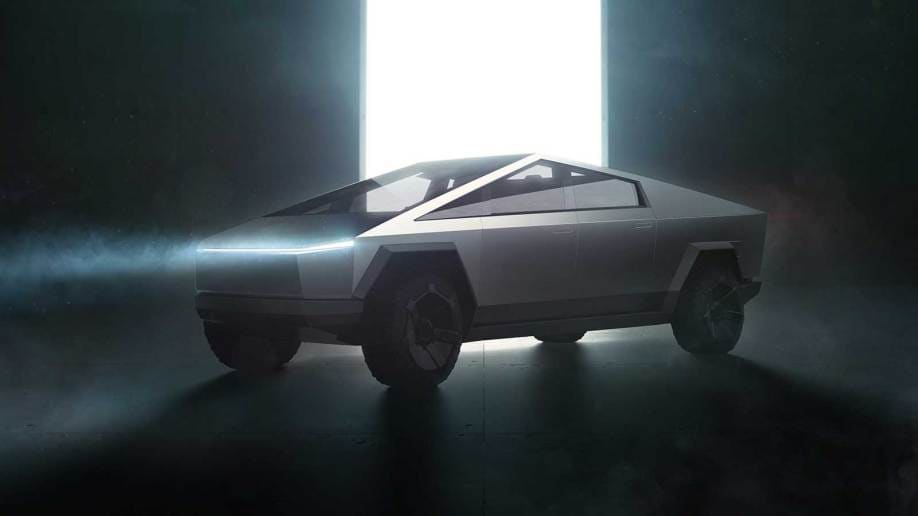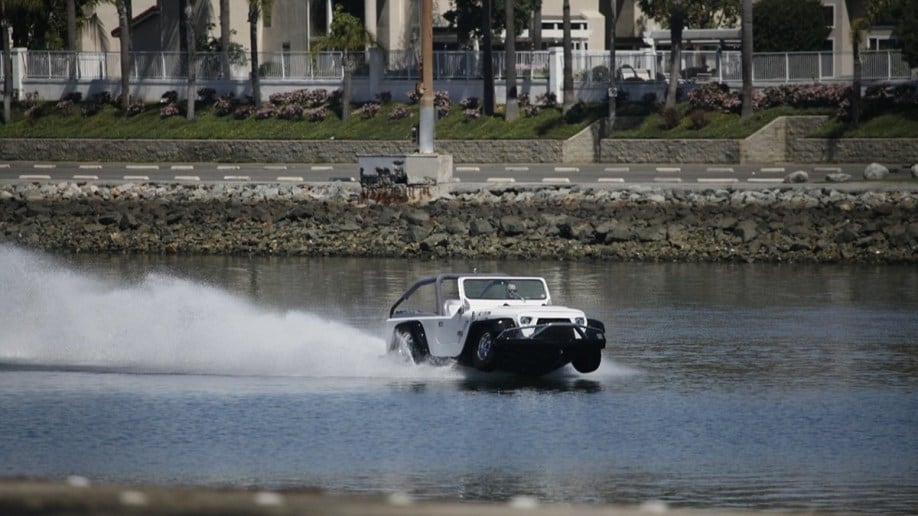
“Cybertruck will be waterproof enough to serve briefly as a boat, so it can cross rivers, lakes & even seas that aren’t too choppy,” Musk said.
The word “briefly” is doing interesting work in that sentence. Any car can serve briefly as a boat. You could serve briefly as a boat.
Cybertruck will be waterproof enough to serve briefly as a boat, so it can cross rivers, lakes & even seas that aren’t too choppy
— Elon Musk (@elonmusk) September 29, 2022
Twitter immediately set phasers to mockery, with even a state government agency stepping in to poke fun at the claim.
Nevertheless, the claim is worth evaluating for a moment, because it’s not entirely implausible.
Our derelict vessel crews are begging you to understand that anything that “serves briefly as a boat” should not be used as a boat https://t.co/lcrunbf1DJ pic.twitter.com/j2eL5tGcJZ
— Washington State Dept. of Natural Resources (@waDNR) September 29, 2022
About the Cybertruck
If you’ve somehow missed every previous mention of the internet’s favorite future product, we should probably explain.
The Cybertruck is a future electric pickup truck planned by Tesla. It’s remarkable mostly for its dramatic appearance. Said to be inspired by the movie “Blade Runner,” it looks something like a wedge made of stainless steel. All hard angles, it seems hewn more than drawn.
Tesla plans three versions of the truck, with both rear-wheel-drive (RWD) and all-wheel-drive (AWD) models, ranges up to 500 miles, and “acceleration from 0-60 in as little as 2.9 seconds.” No one outside the company has ever tested any of those claims.
Musk first announced the truck in 2019, accepting deposits immediately and claiming it would reach the market in 2021. He later delayed that date until 2022. Then 2023. Tesla claims to have received more than a million reservations for the truck. But most of the automotive industry has now debuted their 2023 cars and announced on-sale dates, with no news from Tesla on the futuristic truck’s development.
Could it Really Float?
From an engineering standpoint, it’s entirely possible to build an amphibious truck. There are several amphibious cars that already exist, and though we’re not aware of a pickup, there’s no practical reason you couldn’t build one.
WaterCar’s Panther is close. It claims to be the fastest amphibious car and is based on a Jeep CJ-8 – a long-wheelbase version of the 1980s Wrangler.
A Tesla product could make a great candidate for amphibious evolution. Electric cars could make ideal amphibious vehicles.
Driving a gas-powered car through high water is a bad idea for many reasons, from wet carpet to potentially-warped brake rotors. But what controls the fording depth of a pickup is the point when water gets into the engine, which can cause a devastating hydrolock. Cars with no engine avoid this risk.
Electric vehicle-builder Rivian’s R1T pickup advertises an astounding fording depth of 43.1 inches. But the company’s engineers told Motor Trend that’s not the point at which the truck shuts down from water damage. It’s the point at which it floats.
Kelley Blue Book parent company Cox Automotive owns a minority stake in Rivian.
So, yes, Tesla could probably design the Cybertruck in a way that allowed it to briefly float. That’s already been done.
What Would Sink the Claim?
But Rivian’s electric truck isn’t a boat. Even briefly.
Cars that do become boats, like the WaterCar, require fully watertight hulls. They hide all of their steering and suspension components behind watertight shielding integrated into the hull to minimize resistance. The R1T doesn’t. The working prototype of the Cybertruck Tesla brings to events doesn’t.
Without a watertight hull, the Cybertruck would sink as water entered around those joints. Then again, Musk did say “briefly.”
True amphibious cars also have a propulsion system that works in the water. Without it, it’s not a boat, just flotsam.
In the case of the WaterCar, it’s borrowed from a jet boat, though it is powered by the same Honda 3.7-liter V6 that drives the wheels.
Tesla almost certainly has the engineering skill to design a water propulsion system. But it would add significant cost (the Panther can be yours for a little under $160,000). Musk has admitted the Cybertruck will be more expensive than the sub-$40,000 price initially promised. But engineering it for water would add significant cost and complication.
So… Should You Believe Musk’s Claim?
At this point, we’d be remiss not to point out that Musk also claimed the Cybertruck’s windows were unbreakable moments before presenters broke them on stage. He promised a sub-$40,000 starting price, then walked that promise back. And, of course, he has delayed it at least three times, with the calendar suggesting that a fourth delay is inevitable.
Having worked at Tesla, I can say with some confidence that the design engineers are hearing about this requirement for the first time here. pic.twitter.com/SFKgSPkoYS
— Superfast Matt (@Superfast) September 29, 2022
In the time since Musk first announced the Cybertruck, three automakers have beaten it to market with impressive electric pickups. Rivian has delivered its R1T to customers, Ford’s F-150 Lightning is now in thousands of driveways, and the GMC Hummer pickup has been in customer hands for months.
In all likelihood, the Chevrolet Silverado EV will also beat the Cybertruck to market. Ram plans to show off a concept for its first electric pickup next month, and could beat Tesla to the road as well.
So, Musk’s claim doesn’t point to an impossible feat of engineering. But we’d settle for a Cybertruck that served briefly as a truck at this point.








